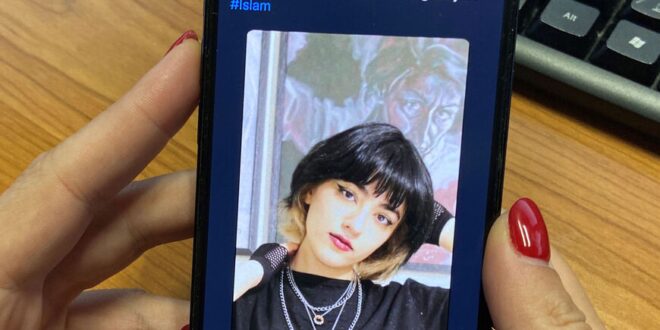Parents outraged by latest actions to suppress protests, as students heckle government official.
Tehran’s Mortazavi neighborhood witnessed clashes well into midnight after security forces raided a girls’ high school amid nationwide anti-government unrest that has continued unabated for over five weeks.
The tension began after stories made rounds on social media of some students being beaten up and reportedly forced to undress during body searches for cell phones. The Education Ministry confirmed the entirety of the incident “after one of the students was found possessing a mobile phone.”
School authorities and security organizations have recently been cracking down on schoolgirls after they entered queues of protesters with unprecedented defiance by removing their headscarves and chanting anti-government slogans, not to mention heckling and shaming hard-line clerics.
“Some of the students suffered blood pressure drops and were treated by emergency services,” the Education Ministry’s statement added. “But no one has died.” Social media videos showed at least one of the students being carried before being hospitalized.
Parents rushed their way to the school but were seen blocked by security forces standing guard outside the main building housing the classrooms. Clashes erupted later across several streets in the vicinity of the school, as other protesters joined in by chanting against Supreme Leader Ayatollah Ali Khamenei, blocking roads and setting litter bins on fire. Security forces were seen forcefully arresting some protesters.
Later, Iranian police appeared to be scrambling for explanations. An official statement said security forces had been deployed to the neighborhood in response to reports of “a clash involving thugs,” suggesting that the deployment was unrelated to anti-government protests. The security forces, according to the statement, later learned about the tensions at the school nearby. “They did not enter the school,” the statement said, only to become confusing in the next sentence: “Some of them entered to talk to the parents.”
‘Get out, murderer!’
Government spokesman Ali Bahadori Jahromi, who was shouted down at Tehran’s Khajeh Nasir University on Monday, visited another university in the clerical and conservative city of Qom on Tuesday. Angry students heckled the spokesman, asking him to “get out” as they called him a “murderer.”
Bahadori Jahromi says his visits are aimed at promoting dialogue and described as “dictators” the students interrupting his speeches.
Many other campuses continued to be tense as students defied decadeslong university cafeteria rules of gender segregation. Footage was released on Tuesday showing students at Sharif, Tehran and Mashhad universities, where students opened long tablecloths on campus grounds, sitting mixed and chanting slogans at lunchtime.
Harsh indictments
The Oslo-based Iran Human Rights has documented the killing of 215 protesters, among them 27 children, during the unrest. It blames the deaths on live ammunition and baton beatings by government forces. A BBC News report also revealed on Tuesday that a 21-year-old protester had been “shot at close range” earlier last month shortly after he tore down a Khamenei banner among cheering crowds.
While the government has yet to officially announce the number of arrests, thousands are believed to have been put behind bars over the past month. Fear is now growing that the Iranian judiciary will fulfill its pledge of a “merciless crackdown” on those in detention, as government loyalists are persistently calling for the “worst punishment.”
Tehran’s prosecutor, Ali Salehi, said on Monday that 315 people have been indicted so far in the capital alone over “conspiracy against national security,” an ambiguous charge Iranian security organizations typically level against dissidents.
At least four among those defendants were indicted with “Moharebeh,” or “waging war on God.” Under the Islamic Republic’s penal code, the charge is punishable by execution.
 Eurasia Press & News
Eurasia Press & News


